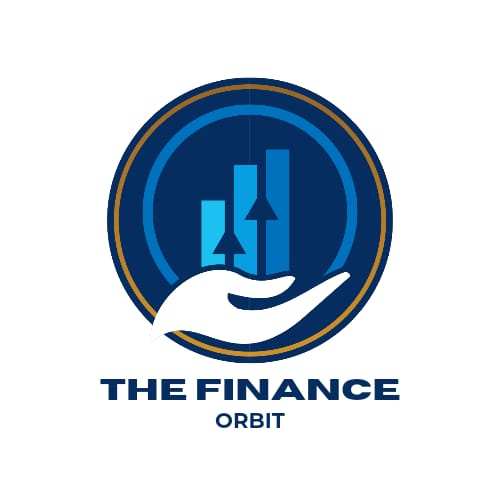
Student loan forgiveness remains a critical topic in the financial landscape, impacting millions of borrowers across the United States. With recent developments under the Biden administration, there have been significant advancements and challenges in the realm of student loan forgiveness. This blog post will provide a comprehensive overview of the current state of student loan forgiveness, the recent updates, and what borrowers need to know to navigate these changes effectively.
What is Student Loan Forgiveness?
Student loan forgiveness is a program that allows borrowers to have some or all of their federal student loans discharged or forgiven under certain conditions. This relief can be a significant financial relief for those burdened by student loan debt, offering a path to financial stability and freedom.
How Does Student Loan Forgiveness Work?
Typically, student loan forgiveness is granted based on specific criteria such as employment in public service, teaching in low-income areas, or making consistent payments under an income-driven repayment plan. Programs such as Public Service Loan Forgiveness (PSLF), Teacher Loan Forgiveness, and Income-Driven Repayment (IDR) Forgiveness are designed to provide relief to borrowers meeting these conditions.
Recent Developments in Student Loan Forgiveness
The Biden administration has made significant strides in expanding and improving student loan forgiveness programs. Recent updates include substantial loan forgiveness for millions of borrowers, along with ongoing efforts to address challenges and threats to these programs.
Key Updates:
- Forgiveness for 5 Million Borrowers: Vice President Kamala Harris recently highlighted the administration’s success in providing student loan forgiveness to 5 million borrowers. This milestone reflects the administration’s commitment to easing the burden of student debt for millions of Americans.
- $1.2 Billion in Forgiveness: The administration announced a new wave of student loan forgiveness totaling $1.2 billion. This includes relief for borrowers who have been defrauded by their institutions and those who qualify under existing forgiveness programs.
- Threats to Programs: Despite these advancements, there are ongoing threats to student loan forgiveness programs. Legal challenges and political opposition could impact the future availability and scope of these programs. It’s essential for borrowers to stay informed about these potential changes.
Types of Student Loan Forgiveness Programs
Understanding the various student loan forgiveness programs can help borrowers identify which options may be available to them. Here are some of the primary programs:
Public Service Loan Forgiveness (PSLF)
The PSLF program is designed to forgive the remaining balance on Direct Loans after the borrower has made 120 qualifying monthly payments under a qualifying repayment plan while working full-time for a qualifying employer, such as government organizations or non-profit organizations.
Teacher Loan Forgiveness
Teachers who work in low-income schools or educational service agencies for five consecutive years may be eligible for forgiveness of up to $17,500 on their Direct Subsidized and Unsubsidized Loans and their Subsidized and Unsubsidized Federal Stafford Loans.
Income-Driven Repayment (IDR) Forgiveness
Under IDR plans, borrowers can have their remaining loan balance forgiven after making 20 or 25 years of qualifying payments, depending on the specific plan. The plans include Income-Based Repayment (IBR), Pay As You Earn (PAYE), and Revised Pay As You Earn (REPAYE).
Steps to Qualify for Student Loan Forgiveness
To take advantage of student loan forgiveness, borrowers need to follow specific steps and meet the necessary requirements:
1. Understand Your Loans
Identify which of your loans are eligible for forgiveness programs. Federal Direct Loans are typically eligible, while other types of loans may need to be consolidated into a Direct Loan to qualify. Go to StudentAid.gov and try to log in or recover your account.
2. Choose the Right Repayment Plan
Select a repayment plan that qualifies for the forgiveness program you are targeting. Income-driven repayment plans are often a prerequisite for forgiveness under PSLF and IDR programs.
3. Make Consistent Payments
Ensure that you make the required number of qualifying payments. For PSLF, this means 120 on-time payments, while for IDR forgiveness, it means 20 or 25 years of payments.
4. Maintain Eligibility
For programs like PSLF, maintain full-time employment with a qualifying employer throughout the repayment period. For Teacher Loan Forgiveness, work in a qualifying low-income school or educational service agency.
Challenges and Considerations
While student loan forgiveness offers significant benefits, there are challenges and considerations to keep in mind:
Documentation and Tracking
Maintaining accurate records and documentation of your payments and employment is crucial. Missteps in documentation can lead to disqualification from forgiveness programs.
Program Changes
Stay informed about potential changes to student loan forgiveness programs. Legislative or administrative changes can impact your eligibility and the terms of forgiveness.
Tax Implications
Be aware of the potential tax implications of loan forgiveness. In some cases, the forgiven amount may be considered taxable income, which can result in a substantial tax bill.
Future Outlook for Student Loan Forgiveness
The future of student loan forgiveness programs remains uncertain. While the current administration has shown a strong commitment to expanding and improving these programs, legal and political challenges could impact their availability. It’s essential for borrowers to stay informed and proactive in managing their student loans.
Conclusion
Student loan forgiveness provides a crucial lifeline for millions of borrowers struggling with student debt. With recent advancements under the Biden administration, there are new opportunities and ongoing challenges in the realm of student loan forgiveness. By understanding the various programs, meeting the necessary requirements, and staying informed about changes, borrowers can take advantage of these programs to achieve financial stability and freedom. As the landscape of student loan forgiveness continues to evolve, staying proactive and informed is key to navigating this complex but potentially rewarding journey.

